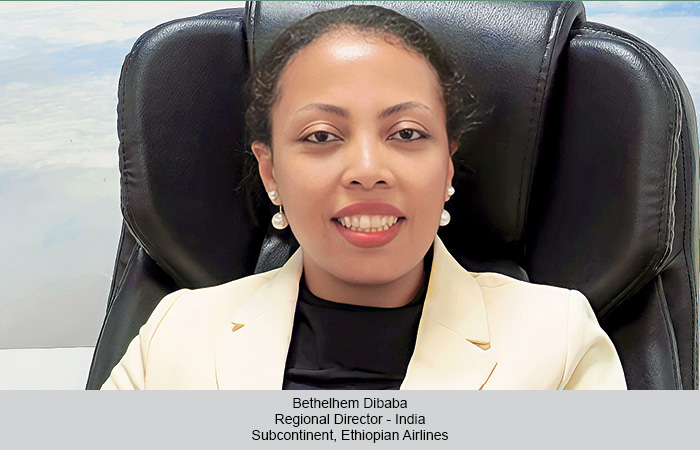The government’s ambitious Ude Desh Ka Aam Nagrik (UDAN) Regional Connectivity Scheme has attracted a total of 43 initial proposals from 11 bidders to cover 190 routes, reveals Jayant Sinha, Minister of State for Civil Aviation.
As the first round of bidding closed for MoCA’s UDAN scheme, Sinha announced that the industry has given huge response in favour of the scheme. “UDAN is a game changer and a real step-change for Indian aviation. Today, we have 75 operational airports in this country. Through the bids we have received for UDAN, it appears that we will now have 43 new airports that will be joining our aviation network. This will make a total of 118 airports which will be operational when UDAN is implemented in the next month or two. We have 11 bidders that are participating in UDAN, of which several companies would be starting scheduled services for the first time,” he said.
Sinha added that the bidders include the existing airlines in India as well as a number of smaller airlines as well. The 43 initial proposals will be put up for counter bidding. Sinha said, “Of these proposals, we have 11 bidders covering 190 UDAN routes. These routes serve 30 currently served airports and 12 currently underserved airports, like Gwalior and many others. In addition, 43 airports which have no flights at all right now will also get flight service.”
Sinha explained that this will boost both the national aviation market, which connects the major cities and also the regional aviation market, which serves Tier-II and Tier-III cities. He further said that this was only the first round of bidding and they will have more rounds of bidding as the scheme matures. “There are many airports and airstrips in this country that deserve air services. As the model we have developed matures, and new airlines develop as scheduled carriers, we would be able to link many of these other airstrips that currently can accept flights, but don’t have any flights. It is a wonderful scheme for everyone including new scheduled carriers which are likely to build successful businesses, as well as existing national airlines because they will have more traffic coming in to the important hub airports, from where they can go all over the country and fly internationally too. There are airports like Jaisalmer, Bikaner, Jalgaon, Akola and Cooch Behar, which are absolutely ready to go, for which we have got bids and as soon as the operators get their flying permits and certifications in place, we will be able to activate these airports,” said Sinha.
Sinha claimed that the flight services will get started sometime in late Feb and early March. The UDAN scheme will accommodate a wide variety of aircraft including small aircraft of 19-20 seaters, to 72 or 80 seaters, as well as jets. The question arises whether every new route will be a monopoly of a single operator after the bidding? “Once the bid has been awarded after the counter bidding process, that operator will have a three-year exclusivity to fly that route. That is intended to ensure that it is economically attractive and profitable for those operators, while enabling us to provide lower subsidies,” he added.
The Regional Connectivity Fund that the government has put for regional connectivity has not seen participation from many airlines as yet. However, the minister was still hopeful about it. “The Viability Gap Funding (VGF) that we have put on aircraft will see many partner airlinesto support us. We are in discussion with the airlines to convince them to participate in the Regional Connectivity Fund (RCF) process and to be valued partners in the UDAN programme. We want to assure them what we have done is the most efficient and effective way for getting the regional connectivity scheme started. Regarding VGF, we are committed as per the UDAN terms and conditions that the moment you start a flight, you will get the VGF subsidy,” said Sinha.
However, how would the subsidy be possible if all the airlines don’t come forward to contribute to RCF?
“While we are expecting cooperation from other airlines for participation, we also have the support of the state governments, and AAI is operating the scheme. The VGF subsidies will be provided. We have 15 states, which have already signed the MoU and we are in close discussion with three more states. The states which have signed the MoUs have agreed to provide a number of concessions including lower excise duty on ATF to be able to get these airports operational with support, as far as police and fire safety is concerned. They will also share in providing the VGF subsidy, with a 10 per cent contribution.”
Claiming that the UDAN scheme is unique in its nature, Sinha said that they do not seek any budgetary support from the government for the same. “It’s a selffunding scheme and a unique market based mechanism to subsidise the regional aviation market.
“We think it’s very innovative and will be studied around the world, because we have designed the scheme in such a way that it is both attractive for consumers in these airports as well as for operators. Thus, we have succeeded in that balancing act of providing flights services to a large number of airports with operators believing that it will be profitable and viable routes for them,” asserted Sinha.
 TravTalk India Online Magazine
TravTalk India Online Magazine





